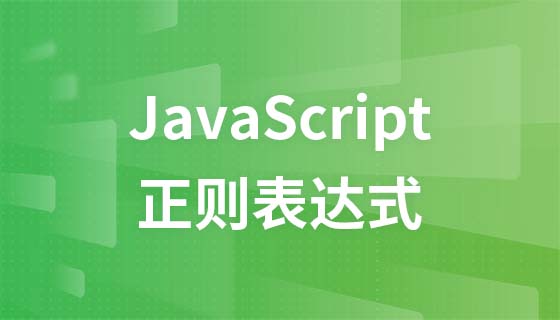打印后台处理程序概念/API 和通道:将作业从serveHTTP 传递到队列的问题
来源:stackoverflow
时间:2024-05-01 14:09:38 397浏览 收藏
哈喽!今天心血来潮给大家带来了《打印后台处理程序概念/API 和通道:将作业从serveHTTP 传递到队列的问题》,想必大家应该对Golang都不陌生吧,那么阅读本文就都不会很困难,以下内容主要涉及到,若是你正在学习Golang,千万别错过这篇文章~希望能帮助到你!
这里已经得到了一些帮助,这让我在我正在尝试的这个概念上取得了进展,但它仍然不太有效,而且我遇到了一个我似乎无法解决的冲突。
我在这里尝试在流程图中说明我想要的内容 - 请注意,客户端可以是许多将发送打印作业的客户端,因此我们无法回复当时正在处理我们作业的工作人员,但对于大多数人来说会的(高峰时段不会,因为打印处理工作可能需要时间)。
type queueelement struct {
jobid string
rw http.responsewriter
donechan chan struct{}
}
type globalvars struct {
db *sql.db
wg sync.waitgroup
jobs chan queueelement
}
func (gv *globalvars) servehttp(w http.responsewriter, r *http.request) {
switch r.url.path {
case "/startjob":
fmt.printf ("incoming\r\n")
donec := make(chan struct{}, 1) //buffered channel in order not to block the worker routine
newprintjob := queueelement{
donechan: donec,
jobid: "jobid",
}
gv.jobs <- newprintjob
func(donechan chan struct{},w http.responsewriter) {
ctx, cancel := context.withtimeout(context.background(), 5*time.second)
defer cancel()
select {
//if this triggers first, then this waiting goroutine would exit
//and nobody would be listeding the 'donechan'. this is why it has to be buffered.
case <-ctx.done():
fmt.fprintf(w, "job is taking more than 5 seconds to complete\r\n")
fmt.printf ("took longer than 5 secs\r\n")
case <-donechan:
fmt.fprintf(w, "instant reply from servehttp\r\n")
fmt.printf ("instant\r\n")
}
}(donec,w)
default:
fmt.fprintf(w, "no such api")
}
}
func worker(jobs <-chan queueelement) {
for {
job := <-jobs
processexec ("start /i /b try.cmd")
fmt.printf ("job done")
// processexec("start /i /b processandprint.exe -" + job.jobid)
job.donechan <- struct{}{}
}
}
func main() {
db, err := sql.open("sqlite3", "jobs.sqlite")
if err := db.ping(); err != nil {
log.fatal(err)
}
db.setmaxopenconns(1) // prevents locked database error
_, err = db.exec(setupsql)
if err != nil {
log.fatal(err)
}
// create a globalvars instance
gv := globalvars{
db : db,
jobs: make(chan queueelement),
}
go worker (gv.jobs)
// create an http.server instance and specify our job manager as
// the handler for requests.
server := http.server{
handler: &gv,
addr : ":8888",
}
// start server and accept connections.
log.fatal(server.listenandserve())
}
上面的代码是servehttp和工作人员在此处的帮助下,最初servehttp内部的func是一个go例程,对我来说整个冲突就在这里出现 - 这个概念是在servehttp中它产生了一个进程如果工作人员能够在 5 秒内及时处理作业,将会收到工作人员的回复。
如果工作能够在1秒内完成,我想在1秒后立即回复客户端,如果需要3秒,我想在3秒后回复,如果需要超过5秒,我将发送回复5秒后(如果工作需要13秒我仍然想在5秒后回复)。从现在开始,客户必须对工作进行轮询 - 但冲突是:
a) 当 servehttp 退出时 - 然后 responsewriter 关闭 - 并且为了能够回复客户端,我们必须将答案写入 responsewriter。
b) 如果我阻止了servehttp(就像下面的代码示例中,我不将 func 作为 go 例程调用),那么它不仅会影响单个 api 调用,而且似乎之后的所有其他调用都会受到影响,因此,第一个呼叫将及时正确地得到服务,但在第一个呼叫之后同时进入的呼叫将被阻塞操作依次延迟。
c) 如果我不阻止它 - 并将其更改为 go 例程:
gv.jobs <- newPrintJob
go func(doneChan chan struct{},w http.ResponseWriter) {
然后没有延迟 - 可以调用许多 api - 但问题是,servehttp 立即存在,从而杀死 responsewriter,然后我无法回复客户端。
我不确定如何解决这个冲突,在不导致任何服务阻塞的情况下,我可以并行处理所有请求,但仍然能够回复有问题的 responsewriter。
有什么方法可以防止servehttp关闭响应编写器,即使该函数存在?
解决方案
我已对您的代码添加了一些更新。现在它的工作原理正如您所描述的那样。
package main
import (
"database/sql"
"fmt"
"log"
"math/rand"
"net/http"
"sync"
"time"
)
type QueueElement struct {
jobid string
rw http.ResponseWriter
doneChan chan struct{}
}
type GlobalVars struct {
db *sql.DB
wg sync.WaitGroup
jobs chan QueueElement
}
func (gv *GlobalVars) ServeHTTP(w http.ResponseWriter, r *http.Request) {
switch r.URL.Path {
case "/StartJob":
fmt.Printf("incoming\r\n")
doneC := make(chan struct{}, 1) //Buffered channel in order not to block the worker routine
go func(doneChan chan struct{}, w http.ResponseWriter) {
gv.jobs <- QueueElement{
doneChan: doneC,
jobid: "jobid",
}
}(doneC, w)
select {
case <-time.Tick(time.Second * 5):
fmt.Fprintf(w, "job is taking more than 5 seconds to complete\r\n")
fmt.Printf("took longer than 5 secs\r\n")
case <-doneC:
fmt.Fprintf(w, "instant reply from serveHTTP\r\n")
fmt.Printf("instant\r\n")
}
default:
fmt.Fprintf(w, "No such Api")
}
}
func worker(jobs <-chan QueueElement) {
for {
job := <-jobs
fmt.Println("START /i /b try.cmd")
fmt.Printf("job done")
randTimeDuration := time.Second * time.Duration(rand.Intn(7))
time.Sleep(randTimeDuration)
// processExec("START /i /b processAndPrint.exe -" + job.jobid)
job.doneChan <- struct{}{}
}
}
func main() {
// create a GlobalVars instance
gv := GlobalVars{
//db: db,
jobs: make(chan QueueElement),
}
go worker(gv.jobs)
// create an http.Server instance and specify our job manager as
// the handler for requests.
server := http.Server{
Handler: &gv,
Addr: ":8888",
}
// start server and accept connections.
log.Fatal(server.ListenAndServe())
}
是的,你的观点是对的“c)如果我不阻止它”。
为了保存响应编写器,您不应该在其中调用 go 例程。相反,您应该将 servehttp 调用为 go-routine,大多数 http 服务器实现都是这样做的。
这样您就不会阻止任何 api 调用,每个 api 调用将在不同的 go 例程中运行,并被其功能阻止。
由于您的“jobs chan queueelement”是单个通道(不是缓冲通道),因此您的所有进程都会在“gv.jobs <- newprintjob”处被阻止.
您应该使用缓冲通道,以便所有 api 调用都可以将其添加到队列中,并根据工作完成或超时获得响应。
拥有缓冲通道也可以模拟打印机的现实内存限制。 (队列长度1为特例)
以上就是《打印后台处理程序概念/API 和通道:将作业从serveHTTP 传递到队列的问题》的详细内容,更多关于的资料请关注golang学习网公众号!
-
502 收藏
-
502 收藏
-
501 收藏
-
501 收藏
-
501 收藏
-
139 收藏
-
204 收藏
-
325 收藏
-
478 收藏
-
486 收藏
-
439 收藏
-
357 收藏
-
352 收藏
-
101 收藏
-
440 收藏
-
212 收藏
-
143 收藏
-

- 前端进阶之JavaScript设计模式
- 设计模式是开发人员在软件开发过程中面临一般问题时的解决方案,代表了最佳的实践。本课程的主打内容包括JS常见设计模式以及具体应用场景,打造一站式知识长龙服务,适合有JS基础的同学学习。
- 立即学习 543次学习
-

- GO语言核心编程课程
- 本课程采用真实案例,全面具体可落地,从理论到实践,一步一步将GO核心编程技术、编程思想、底层实现融会贯通,使学习者贴近时代脉搏,做IT互联网时代的弄潮儿。
- 立即学习 516次学习
-

- 简单聊聊mysql8与网络通信
- 如有问题加微信:Le-studyg;在课程中,我们将首先介绍MySQL8的新特性,包括性能优化、安全增强、新数据类型等,帮助学生快速熟悉MySQL8的最新功能。接着,我们将深入解析MySQL的网络通信机制,包括协议、连接管理、数据传输等,让
- 立即学习 500次学习
-

- JavaScript正则表达式基础与实战
- 在任何一门编程语言中,正则表达式,都是一项重要的知识,它提供了高效的字符串匹配与捕获机制,可以极大的简化程序设计。
- 立即学习 487次学习
-

- 从零制作响应式网站—Grid布局
- 本系列教程将展示从零制作一个假想的网络科技公司官网,分为导航,轮播,关于我们,成功案例,服务流程,团队介绍,数据部分,公司动态,底部信息等内容区块。网站整体采用CSSGrid布局,支持响应式,有流畅过渡和展现动画。
- 立即学习 485次学习
